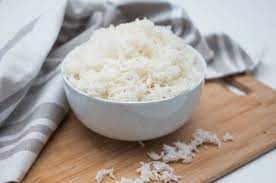No products in the cart.

Firstly, introducing Auscrops, a wonderful market vending company bridging farmers and customers together through market vendors. Click here to out find more about Basmati Rice as well fruit and vegetable offers.
Basmati Rice – All About
Basmati rice is a type of long-grain rice with a unique flavor and texture. Commonly used in Indian and Middle Eastern dishes, but its popularity has grown around the world. If you’re looking for more information, here’s what you need to know.
Origin of Basmati Rice
Are native to India and Pakistan, where it has been cultivated for centuries. The word “basmati” derives from the Sanskrit words for “fragrant” (vas) and “full of aroma” (matti). Traditional varieties of basmati are grown in the foothills of the Himalayas, where ideal soil and climate contribute to its distinctive flavor.
Nutritional Benefits
Basmati is a low-fat food that’s high in carbohydrates and protein. It contains essential vitamins and minerals, such as B vitamins, magnesium, calcium, iron, potassium, zinc, and phosphorus. Basmati also has a lower glycemic index than other types of rice, making it an excellent choice for people with diabetes or blood sugar issues.
Cooking
Cooked using several different methods. Boiled or steamed on the stovetop or cooked in a pressure cooker or electric rice cooker. To achieve optimal results when cooking, it’s important to rinse it several times before cooking to remove any excess starch. Additionally, most recipes recommend adding salt or other ingredients during cooking to enhance flavor and texture.
Conclusion:
An aromatic long-grain variety that’s popular in Indian and Middle Eastern cuisine. It provides numerous nutritional benefits thanks to its high levels of vitamins and minerals like B vitamins, magnesium, calcium, iron, potassium zinc and phosphorus. Additionally, its low glycemic index makes it beneficial for those with diabetes or blood sugar issues. Cooked using several methods including boiling or steaming on the stovetop or pressure cooker/electric rice cooker—just make sure to rinse before cooking to remove any excess starch!
Click here to read similar articles.
 Français
Français 










